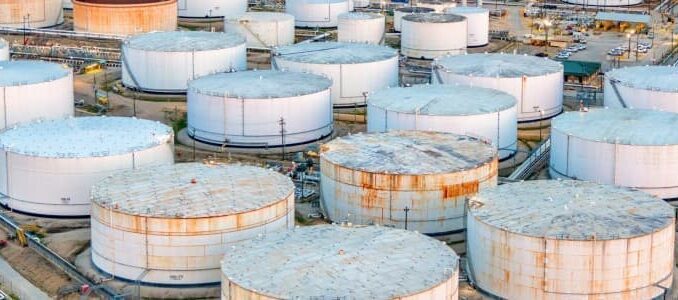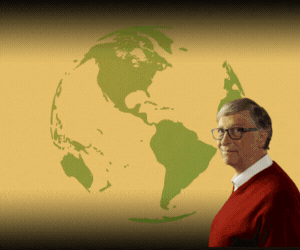
In an era of geopolitical tensions, supply disruptions, and shifting energy dynamics, strategic oil reserves have emerged as critical buffers for global markets. China’s aggressive crude stockpiling strategy has played a pivotal role in stabilizing oil prices and mitigating risks from sanctions and conflicts. But how exactly has this provided a safety net? And could the United States’ efforts to refill its Strategic Petroleum Reserve (SPR) complement this global safeguard? This article explores these questions, delving into China’s import trends from sanctioned suppliers like Russia, Iran, and Venezuela over recent years, while also examining the oil supply-demand balance and price forecasts for 2026.
China’s Stockpiling: A Global Buffer Against Volatility
China, the world’s largest crude oil importer, has ramped up its stockpiling efforts in 2025, creating a substantial cushion for the international oil market.
By accelerating purchases and storage, Beijing has effectively removed significant volumes from circulation, supporting prices amid potential oversupply from OPEC+ production increases or other global factors.
This strategy has been particularly vital in the face of U.S. sanctions on key exporters, providing a “sanctions safety net” by absorbing discounted crude that might otherwise flood the market or exacerbate shortages elsewhere.
Analysts note that China’s expanding storage capacity—estimated to have offset downward price pressures from rising global supply—has helped prevent steeper declines in benchmarks like Brent crude.
For instance, in the first nine months of 2025, China’s average crude imports rose by 2.6% year-over-year, much of which has flowed into reserves rather than immediate consumption.
This stockpiling not only bolsters China’s own energy security but also stabilizes global prices by acting as a demand-side stabilizer during turbulent periods, such as those triggered by Middle East conflicts or trade disputes.
In essence, China’s reserves have become a de facto global safety net, absorbing shocks that could otherwise ripple through supply chains.
China’s Imports from Sanctioned Sources: Volumes and Resilience
Despite Western sanctions on Russia, Iran, and Venezuela, China has maintained and even increased its oil imports from these nations over the past five years, leveraging discounted prices to fuel its stockpiling ambitions. The share of sanctioned crude in China’s imports nearly doubled from 2019 to 2024, rising from around 12% in 2020 to 21% in 2022, and continuing to climb.
This trend has saved China billions—approximately $10 billion in 2023 alone—while sustaining supply flows amid global restrictions.
Russia has been the standout supplier, with imports soaring 55% year-over-year to a record in May 2022, displacing Saudi Arabia as China’s top source.
Overall, China’s crude imports from Russia grew at a compound annual rate far exceeding the 6.2% average for total imports between 2010 and 2024.
By 2022, amid the Ukraine conflict, Russia became China’s leading oil provider, with total imports rising nearly 12% that year to 10.8 million barrels per day (bpd).
Iran and Venezuela have also seen steady demand from Chinese buyers, particularly independent “teapot” refineries, which sourced 98% of their crude from these sanctioned trio in 2023.
However, competition from cheaper Russian oil has squeezed Iranian exports to China since 2022, highlighting the fluid dynamics of this trade.
Sanctions have aimed to curb up to 4 million bpd from these countries, but China’s purchases—often rebranded or shipped via shadow fleets—have kept volumes flowing, underscoring Beijing’s role in blunting the impact of restrictions on global markets.
Filling the U.S. SPR: Bolstering the Global Safety Net?
The U.S. Strategic Petroleum Reserve, designed as an emergency buffer against supply interruptions, has drawn scrutiny for its depleted state—down to about 348 million barrels in mid-2023 from 568 million in early 2022.
Recent sales have generated around $17 billion for the SPR Petroleum Account, funding potential repurchases.
Refilling the SPR could enhance the global safety net by increasing overall reserve capacity, potentially stabilizing prices during crises and complementing China’s stockpiling efforts.
However, the impact may be limited. As a net oil exporter in 2024, the U.S. is no longer bound by international emergency reserve requirements.
Refilling could create “economic carry” in futures markets, incentivizing storage and supporting prices in the short term.
Yet, historical analyses suggest net benefits from SPR management are modest, potentially positive only in extreme scenarios.
Compared to China’s aggressive approach, U.S. policy has been more reactive, but coordinated refilling could amplify the collective buffer against disruptions, especially if aligned with allies like India.
Supply vs. Demand Outlook for 2026: Heading Toward a Glut?
Looking ahead to 2026, global oil markets appear poised for oversupply, with projections painting a picture of building inventories and subdued demand growth. The International Energy Agency (IEA) forecasts global oil demand to rise by about 700,000 bpd in 2026, reaching 104.4 million bpd, down from earlier estimates due to slower economic momentum in key regions like China.
On the supply side, non-OPEC+ production is expected to grow by 1.2 million bpd, contributing to a potential surplus of up to 4 million bpd.
The U.S. Energy Information Administration (EIA) echoes this, predicting rising inventories through 2026 and a supply increase of around 3 million bpd in 2025 alone.
OPEC, however, offers a more bullish view, anticipating demand growth of 1.4 million bpd in 2026, contrasting sharply with the IEA’s gloomier outlook.
Major oil firms like BP, Eni, and TotalEnergies have cautioned that the predicted “2026 glut” may be overstated, emphasizing resilient demand drivers.
Overall, the balance tilts toward surplus, potentially exacerbated if OPEC+ unwinds cuts.
|
Metric
|
IEA Forecast
|
OPEC Forecast
|
EIA Forecast
|
|---|---|---|---|
|
Demand Growth (kb/d)
|
700
|
1,400
|
~700 (implied)
|
|
Supply Growth (mb/d)
|
1.2 (non-OPEC+)
|
N/A
|
Rising inventories
|
|
Total Demand (mb/d)
|
104.4
|
N/A
|
N/A
|
Oil Price Estimates for 2026: Downward Pressure AheadWith oversupply on the horizon, oil price forecasts for 2026 trend lower. The EIA projects Brent crude averaging $52 per barrel (bbl), down from $69 in 2025, amid building gluts.
J.P. Morgan sees $58/bbl, while the World Bank anticipates a drop to $60/bbl—a five-year low—from $68 in 2025.
Morgan Stanley recently raised its first-half 2026 estimate to $60/bbl, citing OPEC+ pauses and Russia sanctions, but warns of volatility.
More bearish views suggest prices could sink to $35/bbl if the glut materializes unchecked.
U.S. retail gasoline prices are expected to fall to $2.90 per gallon from $3.10 in 2025.
These estimates hinge on factors like China’s continued stockpiling, which could provide upward support, and geopolitical risks that might tighten supply.
In summary, China’s crude stockpiles have undeniably fortified the oil market’s resilience, absorbing sanctioned volumes and cushioning price swings. Refilling the U.S. SPR could strengthen this net, and some claim the 2026 outlook points to oversupply and softer prices, urging producers and consumers alike to prepare for a shifting landscape. While others are pointing to the phrase “what glut”. I think the jury is still out on demand. It will be a geopolitical discussion.
I got several calls about Venezuela. Make no mistake, the Venezuela issue is about the Monroe Doctrine and China’s unchecked movement into South America over the last 40 years. Due to corruption and poor management, Venezuela’s oil production has fallen to negligible levels in global markets. It would be more of a fear factor, and it will take billions of dollars and years to bring them back online.
Several factors will be huge: If India and China can keep their demand up, it will make up for the deindustrialization and demand in the UK and the EU. If the war in Ukraine ends, we have a chance of having a good economic recovery globally. The US is facing significant issues in California’s refining sector and other headwinds. The successful war on oil and gas by the Newsom adminstration in California has caused a national security risk that will impact oil demand.
Got Questions on investing in oil and gas? Or do you have a Tax Burden in 2025?
ENB Top News
ENB
Energy Dashboard
ENB Podcast
ENB Substack








